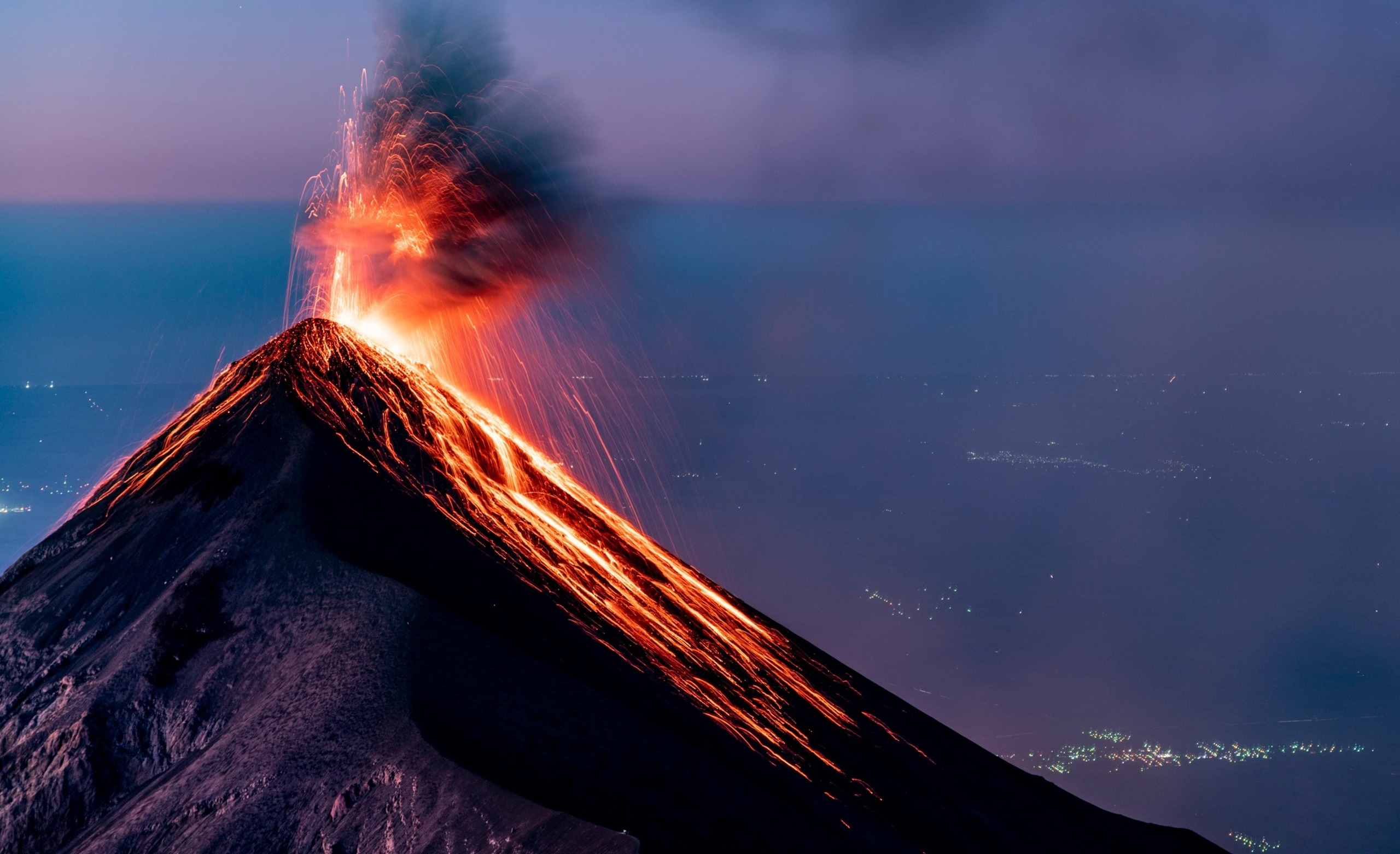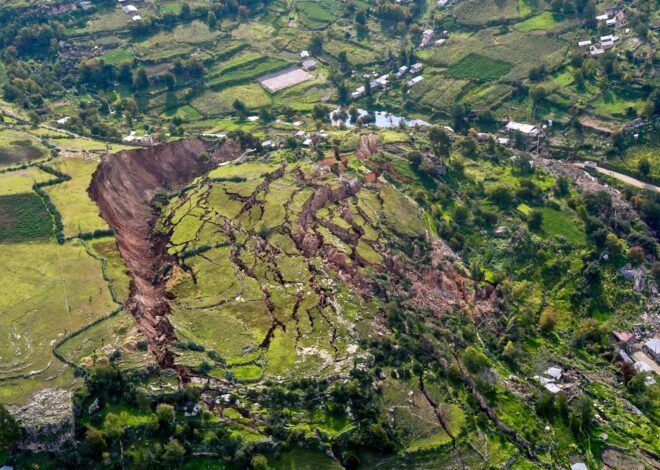
Surviving A Volcanic Eruption
Welcome to the ultimate guide on surviving a volcanic eruption. Picture this: the ground trembles beneath your feet, ominous plumes of smoke fill the sky, and the earth roars as if awakening from a deep slumber. Volcanic eruptions are awe-inspiring displays of nature’s raw power, but they can also be incredibly dangerous.
In this blog post, we will delve into what it takes to survive a volcanic eruption – from understanding different types of volcanoes to preparing for emergencies and coping with the aftermath. So buckle up and get ready to learn how to stay safe in the face of one of Earth’s most breathtaking yet formidable forces!
What is a Volcanic Eruption?
Volcanic eruptions are nature’s spectacular yet perilous displays of the Earth’s inner fury. They occur when magma, molten rock beneath the surface, rises to the top due to pressure buildup or tectonic movements. As this molten rock reaches the surface, it releases gases and volcanic ash into the atmosphere.
The intensity of a volcanic eruption can vary greatly depending on factors like the type of volcano and its eruptive history. Some volcanoes peacefully release lava flows, while others explode violently with pyroclastic flows and ash clouds that pose immediate danger to surrounding areas.
These explosive events can trigger secondary hazards such as lahars (mudflows), landslides, and even tsunamis in coastal regions. Understanding what causes volcanic eruptions is crucial for developing strategies to mitigate their impact on vulnerable communities worldwide.
Types of Volcanoes
Volcanoes come in various shapes and sizes, each with its unique characteristics. One type is the shield volcano, known for its gentle sloping sides formed by layers of lava flowing out smoothly. These volcanoes can erupt frequently but are generally less explosive.
Another type is the stratovolcano, characterized by steep slopes and a cone shape created by alternating layers of ash, lava, and rock fragments. Stratovolcanoes can have powerful eruptions due to their high-viscosity magma.
Then there are cinder cone volcanoes, which are small yet mighty. They form rapidly from ejected lava fragments that pile up around the vent. Despite their size, cinder cones can still produce impressive displays of volcanic activity.
We have calderas – massive depressions often created after a major eruption when the summit collapses into the emptied magma chamber below. These volcanic giants pose unique hazards due to their sheer size and potential for catastrophic eruptions.
Factors that Determine the Impact of a Volcanic Eruption
When it comes to the impact of a volcanic eruption, several factors play a crucial role in determining the severity of the event. The type of volcano itself is a significant factor – whether it’s a shield volcano known for its relatively gentle eruptions or a stratovolcano capable of explosive and destructive outbursts.
The location of the volcano also matters greatly. If it’s situated near densely populated areas or critical infrastructure, the potential impact can be far-reaching and devastating. The size and intensity of the eruption, as well as the specific types of volcanic hazards produced, further contribute to how communities are affected.
Additionally, factors like wind direction can influence where ash and other volcanic materials are dispersed, affecting air quality and visibility over large areas. Geological conditions such as slope steepness and underlying rock formations can impact lava flow dynamics and potential pyroclastic flows.
Understanding these various factors is essential for assessing risk levels, implementing effective preparedness measures, and mitigating the impacts of future volcanic eruptions.
Preparing for a Volcanic Eruption: Emergency Kit and Evacuation Plan
When it comes to preparing for a volcanic eruption, having an emergency kit and evacuation plan in place is crucial. Your emergency kit should include essentials like non-perishable food, water, a first aid kit, flashlights, batteries, and important documents stored in a waterproof container.
Make sure your evacuation plan includes multiple escape routes and meeting points in case of separation from loved ones. Stay informed about evacuation orders from local authorities through radio or official channels.
Consider packing protective gear such as masks to filter out ash particles during the eruption. Don’t forget to include sturdy shoes and clothing that covers your skin to protect against hot ash and debris.
Prepare your home by securing outdoor objects that could become projectiles in high winds. Trim trees near your property to prevent branches from falling on structures during the eruption. Remember, being proactive with preparation can make all the difference when faced with a volcanic event.
During the Eruption: Safety Measures and Key Survival Tips
When a volcanic eruption is underway, it’s crucial to prioritize safety above all else. Stay informed about the situation through official channels and follow evacuation orders promptly. If you’re in an area at risk, have an emergency kit ready with essentials like food, water, medications, and first aid supplies.
During the eruption, protect yourself from falling ash by wearing long sleeves, pants, goggles, and masks. Stay indoors if possible to avoid breathing in harmful particles or gases. Keep windows and doors closed to minimize ash entry into your home.
If caught outside during an eruption, seek shelter immediately in a sturdy building or vehicle. Avoid low-lying areas prone to pyroclastic flows or lahars. Remember that safety should always come first when faced with the unpredictable forces of nature during a volcanic event.
Aftermath: Dealing with Ashfall and Other Hazards, Finding Shelter and Support
After a volcanic eruption, the aftermath can be overwhelming. Ashfall covers everything in its path, creating potential hazards for health and infrastructure. It’s crucial to protect yourself by wearing masks and covering exposed skin to avoid respiratory issues and skin irritation.
Finding shelter is essential during this time of uncertainty. Seek refuge in safe buildings or evacuation centers recommended by local authorities. Stay informed about updates on air quality and evacuation procedures to ensure your safety.
Support from the community and relief organizations plays a vital role in recovery efforts after a volcanic eruption. Reach out for assistance if needed, whether it’s for basic necessities or emotional support. Remember that you’re not alone in facing these challenges – together, we can rebuild and overcome the impacts of the disaster.
Mental and Emotional Resilience During a Natural Disaster
During a volcanic eruption, it’s not just physical preparation that matters; mental and emotional resilience play a crucial role in surviving the chaos. The uncertainty and fear can be overwhelming, but staying calm and focused is key. Remember to prioritize your well-being amidst the turmoil – taking deep breaths and grounding yourself can help manage stress levels.
Seek support from loved ones or trained professionals if needed, as talking about your feelings can provide relief during challenging times. Stay informed about the situation without obsessing over every detail to maintain a sense of control. Engaging in calming activities like meditation or gentle exercise can also aid in coping with anxiety.
Accept that it’s normal to feel scared or anxious but remind yourself that you have the strength to endure this difficult period. Be kind to yourself and others, offering compassion and support where possible. Developing mental resilience takes time, so be patient with yourself as you navigate through this natural disaster.
Conclusion: Staying Informed and Ready for Future Eruptions
Staying informed and prepared is key to surviving a volcanic eruption. By understanding the types of volcanoes, factors that determine their impact, and having an emergency kit and evacuation plan in place, you can increase your chances of staying safe during such a natural disaster.
Remember to follow safety measures and survival tips if faced with an eruption. After the event, be cautious of hazards like ashfall and seek shelter and support as needed. Mental and emotional resilience are also vital for coping with the aftermath.
By being proactive in preparing for volcanic eruptions, staying informed about potential risks, and remaining resilient in the face of adversity, you can enhance your ability to survive such catastrophic events. Stay safe, stay informed, and be ready for future eruptions.



